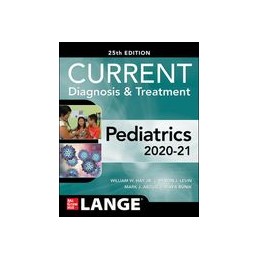- Obniżka


 Dostawa
Dostawa
Wybierz Paczkomat Inpost, Orlen Paczkę, DHL, DPD, Pocztę, email (dla ebooków). Kliknij po więcej
 Płatność
Płatność
Zapłać szybkim przelewem, kartą płatniczą lub za pobraniem. Kliknij po więcej szczegółów
 Zwroty
Zwroty
Jeżeli jesteś konsumentem możesz zwrócić towar w ciągu 14 dni*. Kliknij po więcej szczegółów
Publishers Note:: Products purchased from Third Party sellers are not guaranteed by the publisher for quality, authenticity, or access to any online entitlements included with the product.
The most practical, up-to-date, and well-referenced guide to the diagnosis and treatment of children—from birth to adolescence
Following the Current outline format to make it super easy for you to find the answers you need, this comprehensive, clinically focused guide delivers evidence-based information on the pediatric medical conditions most often encountered in daily clinical practice.
Complete with an invaluable guide to normal laboratory values and 600 photos and illustrations, CURRENT Diagnosis and Treatment Pediatrics offers succinct, authoritative overviews of important pediatric health concerns, such as childhood nutrition and eating disorders; substance abuse; psychiatric disorders; child abuse; oral medicine and dentistry; immunization; and emergencies and injuries. The authors provide detailed descriptions of diseases as well as diagnostic and therapeutic procedures, and everything is presented in the time-saving LANGE CURRENT style:: Problem, Essentials of Diagnosis, Clinical Findings, Differential Diagnosis, Treatment, and Prognosis.
Opis
Indeks: 53814
Autor: Robert Ferris
